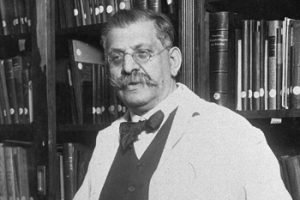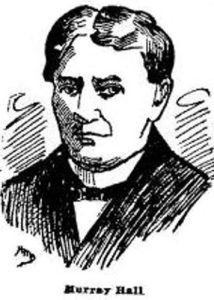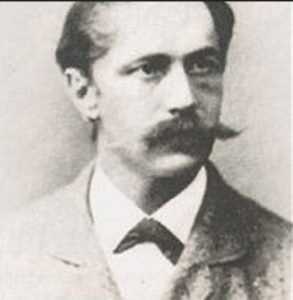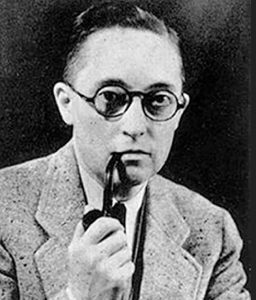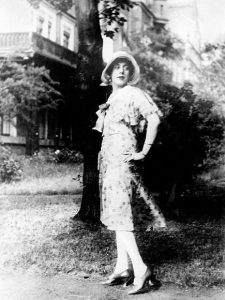History of Gender Variance, Part Two
Continuing with the theme of gender variance in history, we are almost to the point of modern transsexualism. Contrary to what many people think, the modern transsexual movement did not begin in the early sixties, but rather in Germany in 1897. If history teaches us anything, it is that there really is nothing new under the sun. The ideas and rhetoric being touted now by conservatives has been around for hundreds of years. Understanding history makes us better prepared for the approaching political storms.
 1871 Germany: A german law criminalizing sexual acts between men was added to the Reich Penal code, known as Paragraph 175. It read “An unnatural sex act committed between persons of male sex or by humans with animals is punishable by imprisonment; the loss of civil rights might also be imposed.”
1871 Germany: A german law criminalizing sexual acts between men was added to the Reich Penal code, known as Paragraph 175. It read “An unnatural sex act committed between persons of male sex or by humans with animals is punishable by imprisonment; the loss of civil rights might also be imposed.”
Paragraph 175 predated the Nazi Regime. However, the Nazi party revised the law in 1935 to make it broader and harsher. Paragraph 175 was included in section 13 which stated: “Crimes and Offenses against Morality” (Verbrechen und Vergehen wider die Sittlichkeit). Other crimes in this section included bestiality, bigamy, incest, and sexual assault. This law was one of the main tools that the Nazis used to persecute men accused of sexual relations with other men. This law did not apply to sexual acts between women.
1879 California: Charles Durkee Panhurst was a California stage coach driver and is presumptively known as the first “woman” to vote, although she did so under the guise of being a man. He was not discovered to have been born female until after his death in 1879.
1897 Berlin Germany: Dr, Magnus Hirschfeld, was a gay man and a doctor. In 1897 he founded: the Scientific Humanitarian Committee, with Max Spohr, Franz Josef Von Bulow, and Eduard Oberg. It was the first gay liberation organization. Its main goal was to fight for abolishment of Paragraph 175 of the German Penal code.
In 1907 Magnus was introduced to Harry Benjamin. Benjamin was a German-born American endocrinologist and sexologist known for his pioneering role in recognizing transsexuality and developing medical interventions for transsexual and transgender individuals. Harry Benjamin clarified the distinction between Transvestism (cross-dressing) and transexuals. He left Germany to go to the United States in 1913 after receiving his medical degree. Benjamin was born January 12, 1885, in Berlin, Germany and died August 24, 1986, New York City, United States. Benjamin traveled to Vienna in 1921. While there Benjamin met Eugen Steinach, another important figure in the treatment of Transexuals. These three individuals would go on to make medical history.
1901 New York city Murray H. Hall (1841 ? January 16, 1901) Hall was a New York City bail bondsman and Tammany Hall politician who became famous on his death in 1901, when it was revealed that he was assigned female at birth. Born in Govan, Scotland as Mary Anderson, he migrated to the United States and lived as a man for nearly 25 years. Hall was able to vote and to work as a politician at a time when women were denied such rights He also ran a commercial intelligence office. At the time of his death, he resided with his second wife and their adopted daughter. His gender presentation had been a secret even to his own daughter and friends, who continued to respect his gender expression even after his death. After his death, an aide to a state senator remarked “If he was a woman he ought to have been born a man, for he lived and looked like one.
1903 Germany: Daniel Paul Schreber (1842-1911) Schreber who is a respected judge publishes, Memoir of My Nervous Illness. It is an account of a psychotic breakdown in which he believes that God is transforming him into a woman in order to become the object of God’s sexual desire. Schreber explains that he awoke one morning with the idea that he should give into the pleasure of having sexual intercourse as a woman. He dies in a mental institution and would have been forgotten. However, as fate would have it, Sigmund Freud used Schreber’s memoirs as case material for his psychoanalytic system. This became a system of thought that would come to frustrate and suffocate transgender people seeking psychiatric help for 50 years.
1910 Germany: Magnus Hirschfeld coins the terms, transvestite, meaning the erotic urge for disguise, and transsexual, meaning to cross over. Hirschfeld publishes his ground-breaking study of gender variant people, Die Transvestiten, which literally translates as The Transvestites. This work gave a better understanding of sexual and gender variation.
1917 Oregon, America: Alan L. Hart, born Alberta Lucille Hart. Hart was an Oregon physician, TB specialist, researcher, and writer. She was the first known person to take medical steps to become more like the opposite sex. He had a hysterectomy in the United States and lived the remainder of his life as a man.
It was during his time in medical school that Hart realized his attraction to women was considered abnormal by contemporary society. After his graduation he sought psychiatric help from one of his professors, J. Allen Gilbert. Gilbert’s treatment of Hart is documented in his 1920 case study, “Homosexuality and its Treatment, the story of “H”. At first Gilbert tried analysis and hypnosis as a means of reverting Hart’s sexual attraction. However, Hart convinced Gilbert to perform a full hysterectomy on him, citing a eugenic argument that persons with “abnormal inversions” should be sterilized. Following the procedure in the winter of 1917, Hart cut his hair and acquired a male wardrobe, becoming Alan L. Hart. In 1918 Hart eloped with Inez Stark, a public school teacher. By 1923 the marriage had collapsed and Inez later filed for divorce In 1923. In 1925 Hart met Edna Ruddick and they were married in New York. When synthetic male hormones became available after World War II, Hart used them to grow facial hair and obtain a deeper voice. Hart died of heart failure on July 1,1962.
1919 Berlin Germany: Magnus Hirschfeld opens the Sexual Science Institute.
1928 Germany: October 31 the official paper of the Nazi party featured an article on Magnus Hirschfeld warning, “The destruction of youth!” German Mothers, Women Workers! Do you want to hand your children over to homosexuals?”
1928 London: Fictional trans man Stephen Gordon, becomes the first gender variant character to be given the central role in a significant work of literature, Radclyffe Hall’s novel, The Well of Loneliness. The Sunday Express, a popular paper of the period, campaigned against it. The editor James Douglas wrote: “I would rather give a healthy boy or girl a phial of prussic acid than this novel.” Despite the novel’s complete absence of descriptive sex, a court judges the book to be obscene on the that it defended unnatural practices between women.
1930 France: Norman Haire publishes, Encyclopaedia of Sexual Knowledge. It addresses transvestism in detail and also illustrates the first “sex-change” procedures.
1930 Germany: Lili Elbe, Lili Ilse Elvenes (Einar Wegener) A Danish painter with whom the movie, The Danish Girl, was inspired by. Wegener was examined by Magnus Hirschfeld in the spring of 1930. Only months after meeting Wegener Hirschfeld left Germany under ridicule, to embark on a round the world lecture tour. Wegener was then castrated by Hirschfelds colleague, Felix Abraham in the first of 5 operations. Elbe was then sent to Dresden to be completed at the hands of Kurt Warnekros who was a Dresden gynecologist. Elbe would come to call the surgeries an, “Abyss of suffering.” She was confined to bed for months.
Einar Wegener had a wife by the name of Gerda. However, the marriage was deemed null and void after the surgeries. Lili Elbe died in Dresden on September 12, 1931 of an apparent organ rejection after having a womb surgically implanted.
(Author’s note: There seems to be some speculation on the surgeon who did the actual SRS operation.)
1931 June Berlin Germany: Dora Richter, (Rudolph Richter) (1891-19330 Dora was employed as a domestic servant at the Institute for Sexual Science, Where she was treated by Dr. Felix Abraham. Dr. Abraham was working as a psychiatrist at the Institute and According to him; Dora’s first step to feminization was made by means of castration in 1922. After this there was a long pause, until the beginning of the year 1931. Then penis amputation was done and in june the here described surgery; a highly experimental vaginoplasty performed by Dr. Erwin Gohrbandt (1882-1931) . Dr. Gohrbandt later became a decorated surgeon in the Luftwaffe.
As you can see things are really starting to get interesting for the Transgender community. Next month I will discuss more showing the development and discoveries as medical science learns more about the complexities of treating people with gender dysphoria.
Like to make a comment? Login here and use the comment area below.
Category: Transgender History


